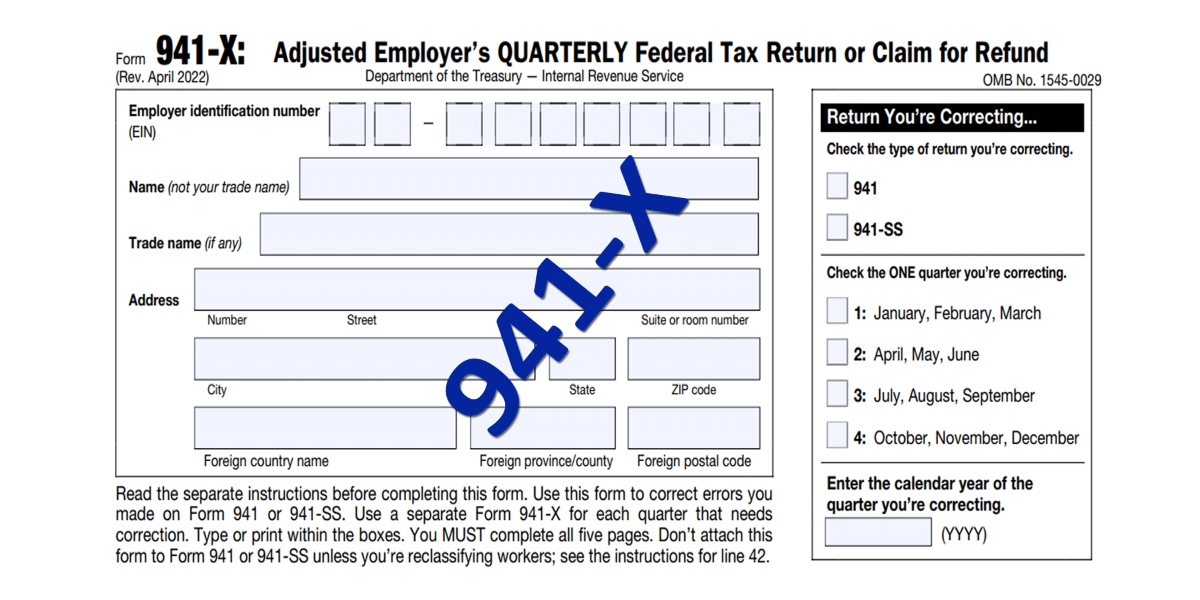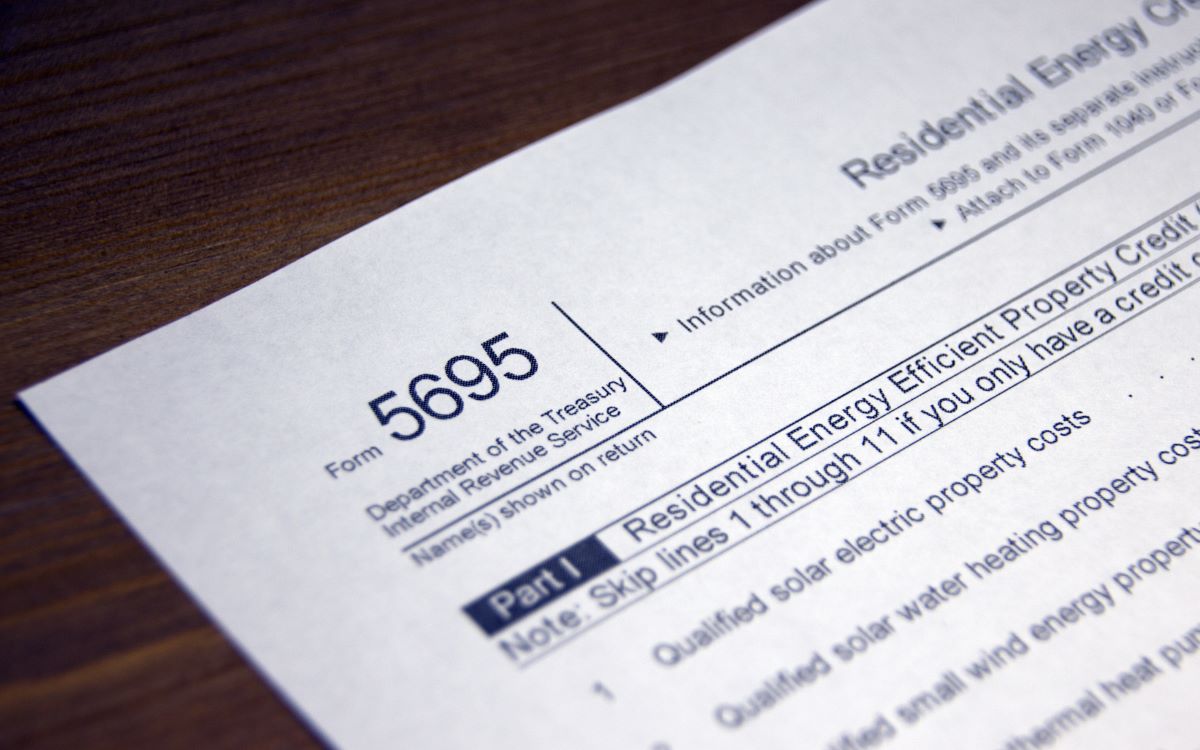

Finance
How To Fill Out A Credit Application
Modified: January 15, 2024
Learn how to fill out a credit application with this comprehensive guide. Improve your financial knowledge and make the best finance decisions.
(Many of the links in this article redirect to a specific reviewed product. Your purchase of these products through affiliate links helps to generate commission for LiveWell, at no extra cost. Learn more)
Table of Contents
Introduction
When it comes to obtaining credit, whether it’s for a mortgage, a car loan, or a credit card, filling out a credit application is a crucial step in the process. A credit application is a formal request for credit, providing financial institutions or lenders with the necessary information to evaluate your creditworthiness and determine whether or not to grant you the credit you are seeking.
Understanding how to properly fill out a credit application is essential to increase your chances of approval. It’s important to provide accurate and complete information to ensure a smooth and efficient application process. In this article, we will guide you through the process of filling out a credit application and provide you with valuable tips to help you complete it successfully.
Before you begin the application, it’s important to gather all the required documentation and information you will need to provide. This will help you avoid delays and ensure that you have everything necessary to complete the application accurately.
Once you have all the necessary information at hand, you can proceed with filling out the credit application. This step-by-step guide will walk you through each section of the application, highlighting important details and pointing out common pitfalls to avoid.
Filling out a credit application can be a tedious process, especially if you are applying for multiple forms of credit. However, by following the guidelines outlined in this article, you can streamline the process and increase your chances of approval. Additionally, we will discuss tips for submitting your application and provide guidance on how to follow up on your application status.
Overall, the information provided in this article will empower you to navigate the credit application process with confidence and efficiency. Let’s dive in and learn how to effectively fill out a credit application!
Understanding the Credit Application
Before diving into filling out a credit application, it’s important to understand what it entails. A credit application is a formal document that asks for detailed information about your financial situation, employment history, and personal details. It is used by lenders, financial institutions, and credit card companies to assess your creditworthiness and determine whether or not to extend credit to you.
The credit application serves as a key tool for lenders to evaluate the risk associated with lending you money. They will carefully review your application to assess your ability to repay the credit and your likelihood of defaulting. This information helps them decide whether to approve your application and what terms and conditions to offer you if approved.
The credit application typically includes sections such as personal information, employment history, income details, expenses, and other relevant information. It is crucial to provide accurate and up-to-date information to avoid any discrepancies or potential issues during the evaluation process.
In addition to the personal and financial information, you may also need to provide supporting documents such as proof of income, identification documents, and bank statements. These documents help verify the information provided in the application and further strengthen your credibility as a borrower.
Understanding the credit application is not just about knowing what information is being requested, but also understanding the implications of the information you provide. Lenders will assess your creditworthiness based on factors such as your credit score, income stability, employment history, and debt-to-income ratio.
By familiarizing yourself with the credit application and its purpose, you can approach the process with confidence. It’s essential to take the time to read through the application carefully, ensuring you comprehend each section and provide the necessary information accurately.
Now that you have a clear understanding of what a credit application is and its significance in obtaining credit, let’s move on to the next step: gathering the required information.
Gathering Required Information
Before beginning the process of filling out a credit application, it’s important to gather all the necessary information and documentation you will need. This will help ensure that you have everything readily available and can complete the application accurately and efficiently.
The specific information required may vary depending on the type of credit you are applying for. However, here are some common pieces of information that you should gather:
- Personal Information: This includes your full name, address, social security number, date of birth, and contact information. Provide accurate and up-to-date details to avoid any potential issues.
- Employment History: You will need to provide details about your current and previous employment. This includes the names of employers, dates of employment, job titles, and contact information for verification purposes.
- Income Details: Prepare documentation to verify your income, such as recent pay stubs, tax returns, or bank statements. Lenders want to ensure that you have a stable income source to repay the credit you are seeking.
- Expenses: Make a list of your monthly expenses, including rent or mortgage payments, utilities, transportation costs, and other recurring bills. This helps lenders assess your ability to manage your finances and meet your financial obligations.
- Financial Assets and Liabilities: Compile information about any assets you own, such as real estate, vehicles, investments, and savings accounts. Additionally, gather details about any existing debts or liabilities, such as loans, credit card balances, or other financial obligations.
- Identification Documents: Have a valid form of identification readily available, such as a driver’s license, passport, or social security card. These documents may be necessary to verify your identity during the application process.
It’s important to note that different lenders may have specific requirements and additional documents they may request, such as proof of residency, marital status, or references. Take the time to research and understand the specific requirements of the lender you are applying to, so you can ensure you have everything necessary.
By gathering all the required information in advance, you can avoid delays and potential frustrations during the application process. It will also enable you to provide accurate and complete information, increasing your chances of a successful application. With the necessary documentation in hand, you are now ready to move on to filling out the credit application itself.
Step-by-Step Guide to Filling out a Credit Application
Filling out a credit application may seem daunting, but with a step-by-step approach, it can be a manageable process. Here is a guide to help you navigate through each section of the application:
- Read the Instructions: Start by carefully reading the instructions provided with the credit application. This will help you understand what information is being requested and any specific guidelines or requirements.
- Provide Personal Information: Begin by filling out your personal information accurately. This includes your full name, address, date of birth, social security number, and contact information. Double-check the information for accuracy.
- Employment History: Fill out the section related to your employment history. Provide details of your current and previous employers, including the names, addresses, job titles, and dates of employment. This helps lenders assess your work stability.
- Income Details: Enter your current income information, including your salary or hourly wage, as well as any additional sources of income. Provide accurate details and attach supporting documentation if required.
- Expenses and Financial Obligations: Fill in the section that asks about your monthly expenses and debts. List your rent or mortgage payments, utility bills, transportation costs, and other regular expenses. Include any outstanding loans, credit card balances, or financial obligations.
- Assets and Liabilities: Provide details of your assets, such as real estate, vehicles, investments, and savings accounts. Also, disclose any liabilities, including outstanding debts or loans you owe.
- Review and Verify: Before submitting the application, review all the information you have entered to ensure accuracy. Take the time to double-check every field and make any necessary corrections or updates.
- Attach Supporting Documents: If required, attach any supporting documentation requested by the lender, such as copies of pay stubs, tax returns, or identification documents. Ensure that all attachments are clear and legible.
- Sign and Date: Sign and date the application as instructed. Your signature confirms that all the information provided is accurate to the best of your knowledge.
Remember, it’s crucial to be honest and transparent throughout the credit application process. Providing accurate and complete information not only increases your chances of approval but also helps build trust with the lender.
Once you have completed all the necessary sections of the credit application and reviewed it for accuracy, you are ready to move on to the next step: submitting the application.
Tips for Completing a Credit Application Successfully
Completing a credit application successfully requires attention to detail and careful preparation. Here are some tips to keep in mind to increase your chances of a successful application:
- Read the Instructions: Carefully read and understand the instructions provided with the credit application. Following the guidelines and requirements will ensure that you provide the information in the requested format.
- Provide Accurate Information: Double-check all the details you enter on the application. Accuracy is crucial, as any inconsistencies or errors could raise red flags for lenders and potentially result in a rejection.
- Be Honest and Transparent: Always provide truthful and complete information. Lenders have ways to verify the information provided, and any discrepancies can harm your credibility and jeopardize your chances of approval.
- Proofread Everything: Before submitting the application, review each section carefully. Look for spelling mistakes, incorrect figures, or missing information. Small errors can create unnecessary delays or complications.
- Attach Supporting Documents: If the application requires supporting documentation, ensure that you include all the necessary paperwork. Attach clear copies of documents such as pay stubs, tax returns, or identification as requested.
- Organize Your Financial Information: Keep all your relevant financial information, such as bank statements, pay stubs, and tax documents, organized and easily accessible. This will help you provide accurate information and speed up the application process.
- Double-Check Contact Information: Make sure your contact information, including phone number, email address, and mailing address, is up to date and accurate. This will ensure that the lender can reach you easily if there are any questions or updates regarding your application.
- Complete the Application in a Quiet Environment: Find a quiet and distraction-free environment to complete the application. This will help you focus and reduce the chances of making mistakes or omitting important information.
- Seek Assistance if Needed: If you are unsure about any sections or have difficulty understanding certain aspects of the application, don’t hesitate to seek assistance. Contact the lender’s customer service or visit a local branch for clarification.
- Keep Copies of the Application: Make copies of the completed credit application before submitting it. This will serve as a reference in case any issues or disputes arise in the future.
Remember, each credit application is unique, and specific lenders may have additional requirements or preferences. Taking the time to understand the lender’s expectations and tailoring your application accordingly can significantly improve your chances of success.
By following these tips, you can increase your confidence in completing a credit application and enhance your chances of approval.
Common Mistakes to Avoid
When filling out a credit application, it’s important to be aware of common mistakes that can hinder the success of your application. By avoiding these mistakes, you can increase your chances of approval. Here are some common pitfalls to watch out for:
- Providing Incomplete Information: Failing to provide complete information can lead to delays or even rejection of your application. Ensure that you fill out every section of the application thoroughly and accurately.
- Providing Inaccurate Information: Providing incorrect or misleading information can result in immediate rejection. Double-check all the details you provide, including personal information, employment history, income, and expenses.
- Omitting Supporting Documentation: If the application requires supporting documents, failing to attach them can cause delays or lead to a rejection. Make sure you understand the documentation requirements and provide all the necessary paperwork.
- Exceeding Your Financial Means: Applying for credit that exceeds your financial capacity can raise concerns for lenders. Be realistic about the amount of credit you can comfortably manage and ensure that it aligns with your income and expenses.
- Not Reviewing Your Application: Neglecting to review your application before submission can result in errors or inconsistencies. Take the time to proofread each section, ensure accuracy, and correct any mistakes.
- Ignoring the Fine Print: Failing to read and understand the terms and conditions of the credit application can lead to unexpected surprises down the line. Pay attention to interest rates, fees, repayment terms, and any other relevant details.
- Submitting Multiple Applications Simultaneously: Applying for multiple forms of credit simultaneously can raise concerns for lenders and impact your credit score. Space out your applications and only apply for credit when necessary.
- Applying for Credit While Having Poor Credit: Filling out a credit application without addressing or improving your poor credit history can result in repeated rejections. Take steps to improve your credit before applying for new credit.
- Not Seeking Clarification: If you encounter any confusion or have questions about certain sections of the application, don’t hesitate to seek clarification from the lender’s customer service or a trusted financial advisor.
- Ignoring Application Follow-up: After submitting the application, failing to follow up or inquire about the status of your application can lead to missed opportunities or delays. Stay proactive and reach out to the lender if necessary.
Avoiding these common mistakes will help you present a strong and accurate credit application. Always strive to provide complete and truthful information while adhering to the lender’s requirements and guidelines.
Now, with an awareness of these common pitfalls, you can confidently proceed with submitting your credit application.
Submitting the Credit Application
Once you have completed the credit application and reviewed it for accuracy, it’s time to submit it to the lender. The submission process may vary depending on the lender’s requirements and preferences. Here are some general guidelines to follow when submitting your credit application:
- Method of Submission: Determine the preferred method of submission by the lender. It could be online through their website, in person at a branch location, or by mail. Follow their instructions to ensure your application reaches the right department.
- Online Submission: If submitting online, navigate to the lender’s website and locate the designated credit application submission page. Follow the instructions provided, inputting the required information accurately and attaching any supporting documents requested.
- In-Person Submission: If submitting the application in person, visit the nearest branch of the lender. Bring a copy of your completed application, along with any supporting documents, and present them to a representative at the customer service or loan department.
- By Mail Submission: If mailing the application, ensure that it is neatly packaged and include any required supporting documents. Use a traceable mailing service and consider sending it with delivery confirmation to track its journey.
- Keep a Copy: Before submitting the application, make a copy of the completed form and any attached documents for your records. This will serve as a reference in case any issues or disputes arise in the future.
- Note the Submission Date: Record the date you submit the application. This will help you track the processing time and follow up with the lender if necessary.
- Confirmation: If submitting the application electronically or in person, ask for a confirmation receipt or acknowledgment from the lender. This provides assurance that your application has been received.
After submitting the credit application, be patient and allow the lender sufficient time to evaluate your application. Processing times may vary depending on the lender and the type of credit you are applying for.
While waiting for a response, it’s a good idea to refrain from applying for additional credit unless absolutely necessary. Multiple credit inquiries within a short period can negatively impact your credit score.
If you haven’t received any communication from the lender within a reasonable timeframe, don’t hesitate to contact them to check on the status of your application. Be polite and professional, and have your application details and submission date on hand for reference.
Remember, the submission of the credit application is an important step, but the decision ultimately lies in the hands of the lender. By following the proper submission guidelines and maintaining open communication with the lender, you increase your chances of a positive outcome.
Now let’s explore what steps you can take to follow up on your application and ensure you stay informed about its progress.
Following up on Your Application
After submitting your credit application, it’s important to stay proactive and follow up with the lender to track the progress and stay informed about the status of your application. Here are some steps you can take to follow up effectively:
- Record the Submission Date: Note down the date you submitted the application. This will help you keep track of the timeline and know when it’s appropriate to follow up.
- Allow Sufficient Time: Give the lender an appropriate amount of time to process and evaluate your application. The timeframe may vary depending on the type of credit you are applying for and the specific lender’s procedures.
- Review Application Terms: During the waiting period, take the time to review the terms and conditions of the credit application. Familiarize yourself with the interest rates, fees, and any other relevant details in preparation for a potential approval.
- Check Application Status Online: If the lender offers an online portal for applicants, log in and check the status of your application. Some lenders provide real-time updates and notifications that keep you informed about the progress.
- Contact the Lender: If you haven’t received any communication or updates within a reasonable timeframe, it’s appropriate to reach out to the lender. Contact their customer service department or the designated point of contact for credit applications.
- Prepare Questions and Information: Before contacting the lender, gather all relevant information, such as your application reference number and personal details. Prepare any specific questions you have about the application process or the status of your application.
- Be Polite and Professional: When speaking or corresponding with the lender, maintain a professional tone and demeanor. Be polite, respectful, and patient. Remember, the representative is there to assist you and provide information.
- Ask for Updates: Inquire about the current status of your application and ask for an estimated timeframe for a decision. Additionally, ask if there are any additional documents or information needed to expedite the evaluation process.
- Take Notes: Document any relevant information or instructions provided by the lender during the follow-up conversation. This will help you keep track of the progress and any actions required from your end.
- Thank the Representative: Show appreciation for the time and assistance provided by the lender’s representative. A polite gesture can go a long way in maintaining a positive rapport throughout the application process.
Following up on your application demonstrates your commitment and eagerness to obtain credit. It also allows you to stay informed and address any potential issues or concerns promptly.
Remember, the decision to approve or decline your application lies with the lender, and sometimes delays can occur. Stay patient and maintain open communication to increase your chances of receiving a prompt and favorable response.
Now that you know how to follow up on your application, it’s time to wrap up and summarize the key points.
Conclusion
Filling out a credit application is a crucial step in obtaining credit, and doing it successfully requires attention to detail and thorough preparation. By understanding the credit application, gathering all the required information, and following a step-by-step guide, you can increase your chances of approval.
Throughout the process, it’s important to avoid common mistakes such as providing incomplete or inaccurate information, neglecting to attach supporting documents, and exceeding your financial means. By being honest, transparent, and organized, you can present a strong credit application that reflects your creditworthiness accurately.
Once you’ve completed the application, ensure that you submit it through the appropriate channels, whether online, in person, or by mail. Keep track of the submission date and allow sufficient time for the lender to process your application.
During the waiting period, take the opportunity to review the application terms and familiarize yourself with the details of the credit you are seeking. If necessary, follow up with the lender to inquire about the status of your application, providing any necessary documentation or information they may require.
Remember, the decision to approve or decline your application ultimately rests with the lender. Stay patient and maintain open communication to increase your chances of a positive outcome.
By following the tips and guidelines outlined in this article and taking the necessary steps to complete and submit your credit application accurately, you can navigate the credit application process with confidence. May your application be successful, and may you access the credit you need to achieve your financial goals!














